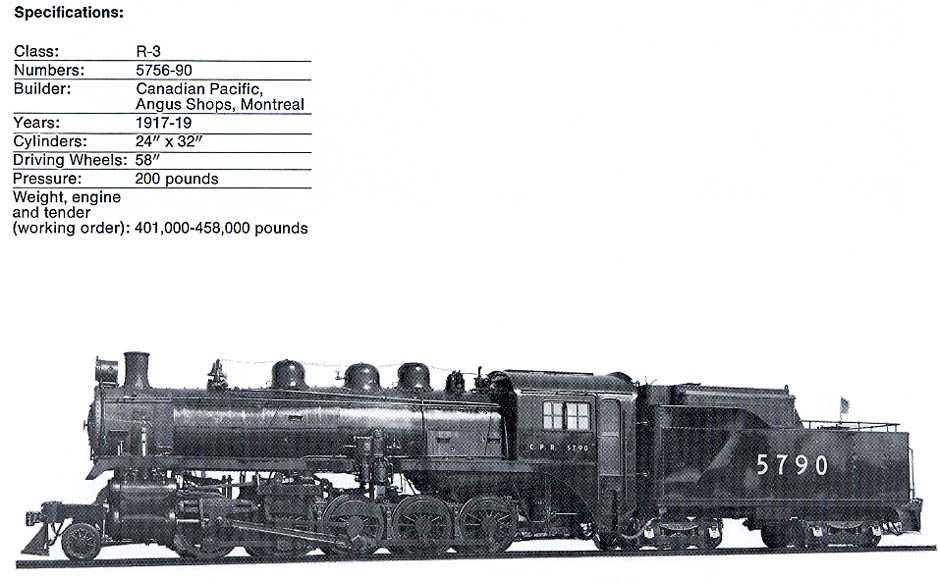|
Decapod
Type |
 |
|
 |
|
by Omer Lavallee
The title "Decapod" is derived from two Greek words meaning While the use of |
This conversion was considered to be a
success; sufficiently so that the construction of 35 additional locomotives of class R3 was
undertaken at Angus Shops beginning in May 1917, and in spite of the priorities of war
production. The last units were completed in February 1919.
The R3s were used in main line services exclusively in the mountains of British Columbia. These assignments included transcontinental passenger trains. They were supplemented by the S class |
From this period, they were used as
pusher and yard engines at such places as Golden, Revelstoke and Notch Hill. Some of them
found their way to yard assignments on the prairies, including Winnipeg.
All except one remained in service until the 1950s. |